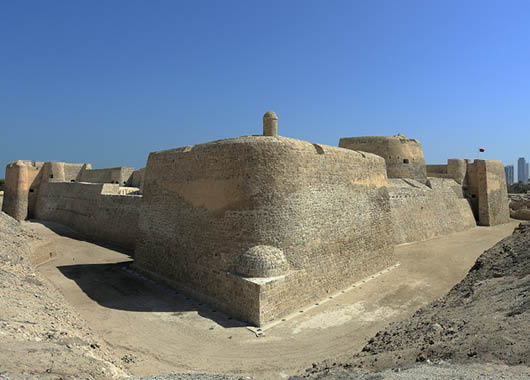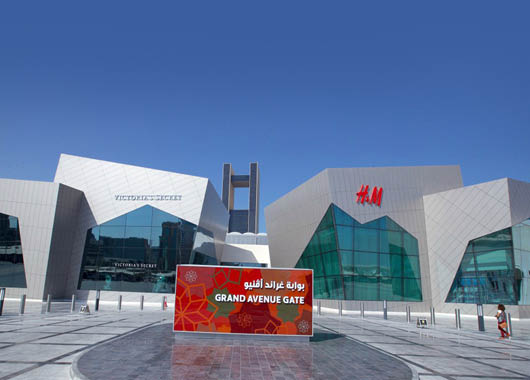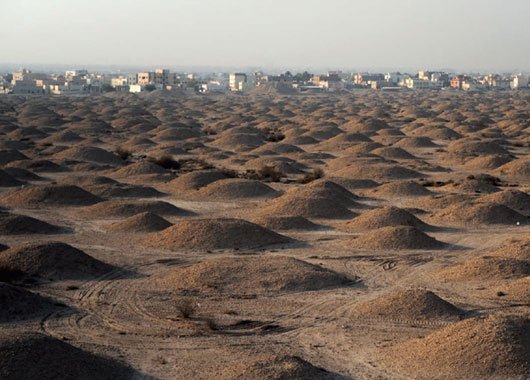The Qal'at al-Bahrain (Arabic: قلعة البحرين; Portuguese: Forte de Barém), also known as the Bahrain Fort or Portuguese Fort, is an archaeological site located in Bahrain. Archaeological excavations carried out since 1954 have unearthed antiquities from an artificial mound of 12 m (39 ft) height containing seven stratified layers, created by various occupants from 2300 BC up to the 18th century, including Kassites, Greeks, Portuguese and Persians. It was once the capital of the Dilmun civilization and was inscribed as a UNESCO World Heritage Site in 2005. The fort and the tell Qal'at al-Bahrain is built on, are located on the Bahrain island, on the northern seashore. On a clear day it is also seen from Saar. It stands like a "sentinel" near Manama, the capital of Bahrain; it is 6 km (4 mi) away from Manama on the fertile north coast. The tell is the largest in the Persian Gulf region and was built close to the port and by reclamation of seashore land. The archaeological findings, which are unearthed in the fort,reveal much about the history of the country. The area is thought to have been occupied for about 5000 years and contains a valuable insight into the Copper and Bronze Ages of Bahrain.
The first Bahrain Fort was built around three thousand years ago, on the northeastern peak of Bahrain Island. The present fort dates from the sixth century AD. The capital of the Dilmun civilization, Dilmun was, according to the Epic of Gilgamesh, the "land of immortality", the ancestral place of Sumerians and a meeting point of gods. The site, 17.5 hectares in area, has been termed as Bahrain's "most important site in antiquity". The first excavation at the site was carried out by a Danish archaeological expedition led by Geoffrey Bibby between 1954 and 1972 on behalf of the Prehistoric Museum of Moesgaard. A few, undated but Kassite era, cuneiform tablets were found. Beginning in the 1970s, a French expedition from the National Centre for Scientific Research worked the site. About 50 tablets were uncovered. Three of them were dated to the reign of a Kassite king named Agum, believed to be Agum III. Since 1987 Danish and Bahrain archaeologists have excavated at the site.
The ruins of the Copper Age consists of two sections of the fortification wall surrounding streets and houses, and a colossal building on the edge of the moat of the Portuguese fort in the centre. Barbar pottery has been unearthed around the walls of the central building, dating back to the same age as the Barbar Temples, although some of the other pottery and range of unearthed artefacts indicated that they predated the temples, dating back to 3000 BC or later. Relics of copper and ivory provide an insight into ancient trade links. Many vessels have been unearthed on the site, and Danish excavations of the Palace of Uperi area revealed "snake bowls", sarcophagi, seals and a mirror, among other things. The excavations of the tel have revealed a small settlement, the only one of that period in eastern Arabia, on its northern side. It has been inferred that the village was settled by people who developed agriculture near the oasis, planted palm trees, tended cattle, sheep and goats and also ventured into fishing in the Arabian Sea.





